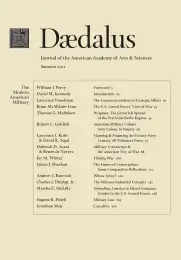The Future of Conscription: Some Comparative Reflections
This essay provides a historical and comparative perspective on contemporary American military institutions. It focuses on the origins, evolution, and eventual disappearance of conscription in Western Europe. By the 1970s, Europeans had developed civilian states in which the military’s traditional role steadily diminished; the formal abolition of conscription after 1989 was the final step in a long, largely silent revolution. A brief survey of military institutions outside of Europe suggests why mass conscript armies will remain politically, culturally, and militarily significant in many parts of the world. Seen in a global context, the American experience appears to combine aspects of Western European civilian states with the willingness and ability to project military power.
[Conscription] is always a significant index of the society where it is found; to view it solely as a method of conducting war is to see very little of it.
–Victor Kiernan1
When Alexis de Tocqueville listed the advantages of democracy in America that came “from the peculiar and accidental situation in which Providence has placed the Americans,” he had no doubts about which was most important. Americans, he wrote, “have no neighbors, and consequently they have no great wars . . . nor great armies, nor great generals.”2 Shielded from potential aggressors by its two great ocean glacis, the United States was, for much of its history, able to avoid building those mass armies on which European states lavished so much energy and resources. When, during the Civil War and World War I, great armies were built, they were dismantled as soon as the war was over. We should not underestimate the reluctance with which Americans abandoned this tradition: the Selective Service Act of 1940 was renewed a year later with a one-vote majority in the House of Representatives and included a prohibi- . . .
